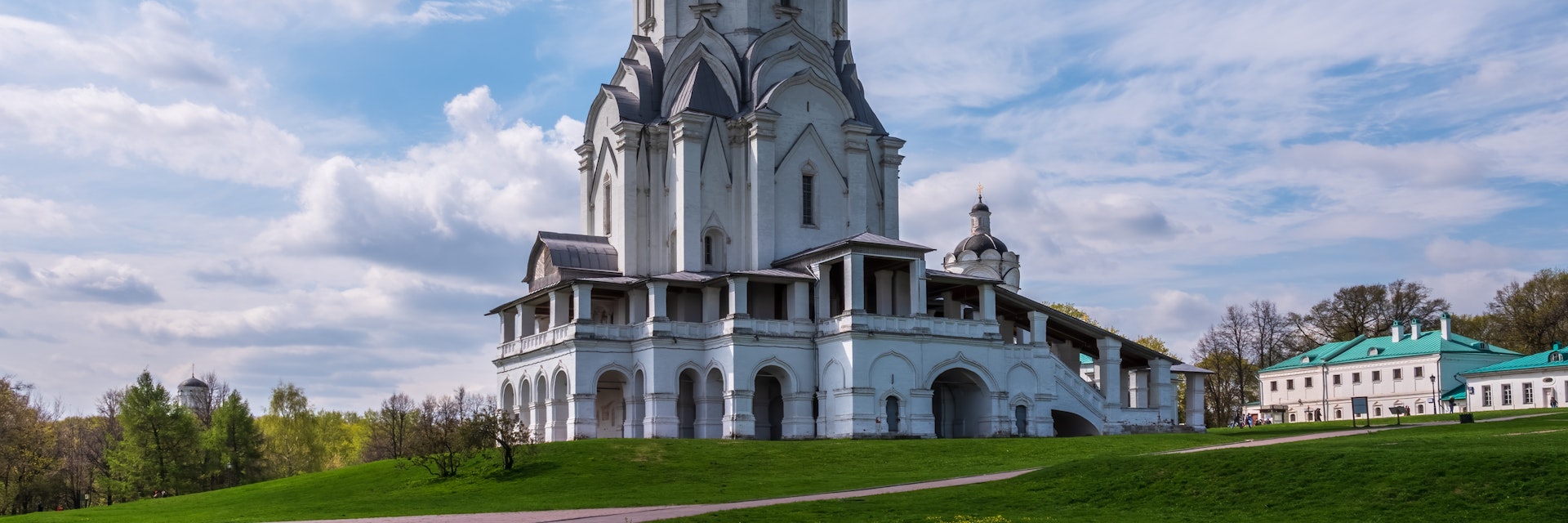Set amidst 4 sq km of picturesque parkland, on a bluff above a bend in the Moscow River, Kolomenskoe is an ancient royal country seat and a Unesco World Heritage Site. Shortly after its founding in the 14th century, the village became a favourite destination for the princes of Moscow. The royal estate is now an eclectic mix of churches and gates, as well as other buildings that were added to the complex over the years.
From Bolshaya ul, enter at the rear of the grounds through the 17th-century Saviour Gate to the whitewashed Our Lady of Kazan Church, both built in the time of Tsar Alexey. The church faces the site of his great wooden palace, which was demolished in 1768 by Catherine the Great. Ahead, the white, tent-roofed 17th-century front gate and clock tower mark the edge of the old inner-palace precinct. The golden double-headed eagle that tops the gate is the symbol of the Romanov dynasty. The adjacent buildings house an interesting museum with a bit of everything: a model of Alexey’s wooden palace, material on rebellions associated with Kolomenskoe, and Russian handicrafts from clocks and tiles to woodcarving and metalwork.
Outside the front gate, overlooking the river, rises Kolomenskoe’s loveliest structure, the quintessentially Russian Ascension Church. Built between 1530 and 1532 for Grand Prince Vasily III, it probably celebrated the birth of his heir, Ivan the Terrible. It is actually an important development in Russian architecture, reproducing the shapes of wooden churches in brick for the first time, and paving the way for Moscow's great St Basil’s Cathedral 25 years later. Immediately west of it are the round 16th-century St George’s Bell Tower and a 17th-century tower. About 300m further southwest, across a gully, the white St John the Baptist Church was built for Ivan the Terrible in the 1540s or 1550s. It has four corner chapels that make it a stylistic ‘quarter-way house’ between the Ascension Church and St Basil’s.
Among the old wooden buildings on the grounds is Peter the Great’s cabin, where he lived while supervising ship- and fort-building at Arkhangelsk. The cabin is surrounded by a re-creation of the tsar’s orchards and gardens.








